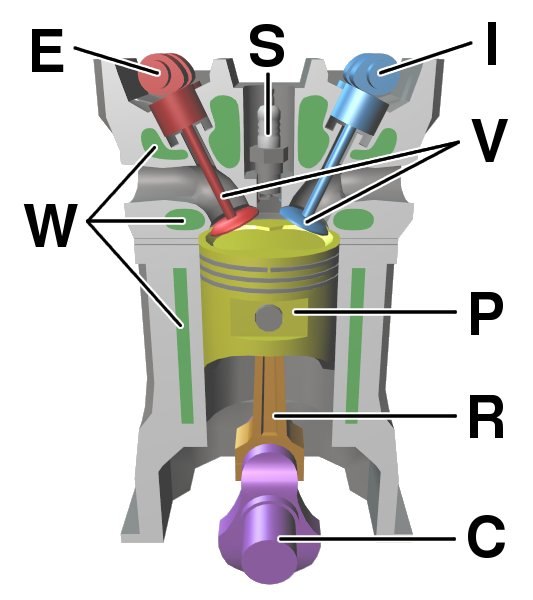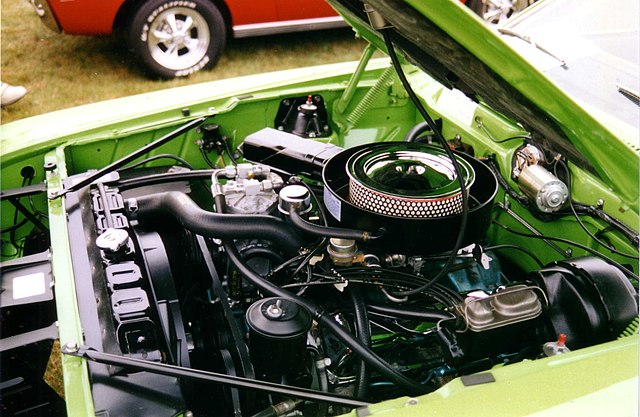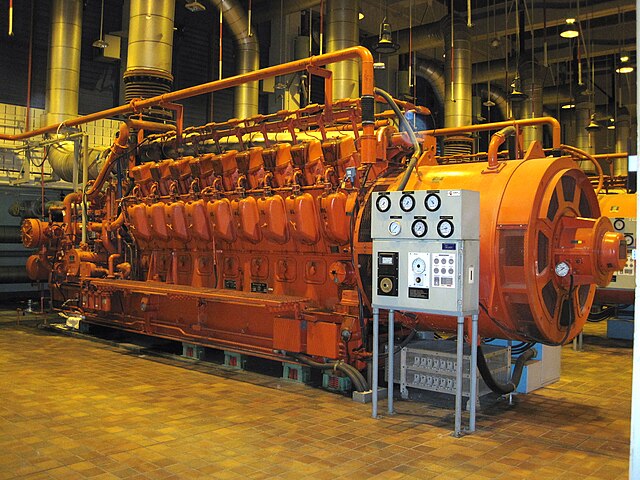A spark plug is an electrical device used in an internal combustion engine to produce a spark which ignites the air-fuel mixture in the combustion chamber. As part of the engine's ignition system, the spark plug receives high-voltage electricity which it uses to generate a spark in the small gap between the positive and negative electrodes. The timing of the spark is a key factor in the engine's behaviour, and the spark plug usually operates shortly before the combustion stroke commences.
Several sizes of spark plug (electrodes at the bottom)
Design with two side electrodes
Central and side electrodes
An electric spark being generated between the electrodes
Internal combustion engine
An internal combustion engine is a heat engine in which the combustion of a fuel occurs with an oxidizer in a combustion chamber that is an integral part of the working fluid flow circuit. In an internal combustion engine, the expansion of the high-temperature and high-pressure gases produced by combustion applies direct force to some component of the engine. The force is typically applied to pistons, turbine blades, a rotor, or a nozzle. This force moves the component over a distance, transforming chemical energy into kinetic energy which is used to propel, move or power whatever the engine is attached to.
Diagram of a cylinder as found in an overhead cam 4-stroke gasoline engine: C – crankshaft E – exhaust camshaft I – inlet camshaft P – piston R – connecting rod S – spark plug V – valves. red: exhaust, blue: intake. W – cooling water jacket gray structure – engine block
Reciprocating engine of a car
Diesel generator for backup power
Bare cylinder block of a V8 engine








